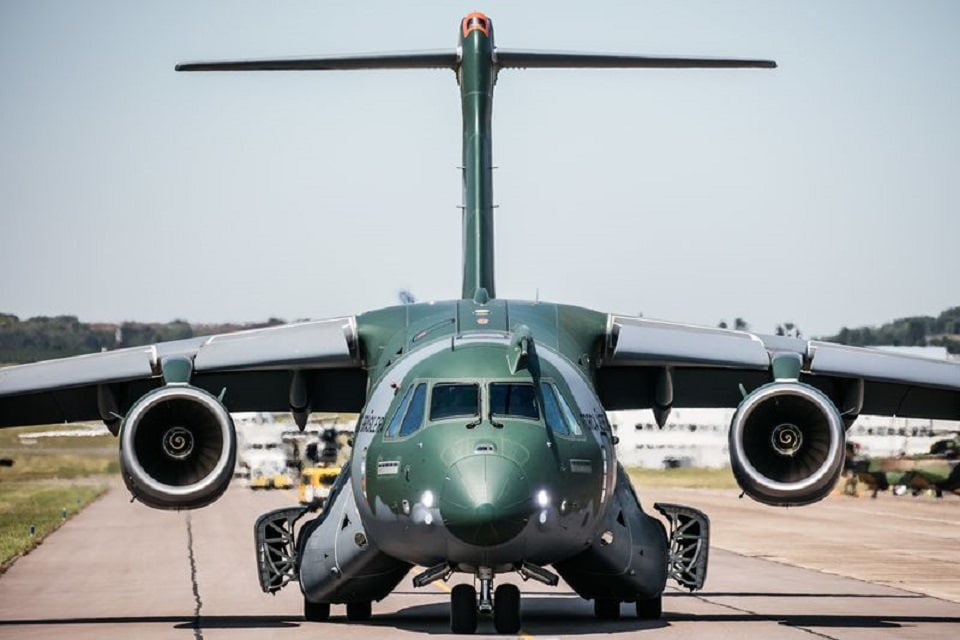Aerospace
Embraer, a renowned aircraft manufacturer, has joined forces with Tata and Mahindra Group

A well-known aircraft manufacturer, Embraer, is in talks to partner up with Tata Group and Mahindra Group to build up local manufacturing capabilities in India. With the help of this strategic alliance, India’s aerospace sector will expand, domestic manufacturing will be strengthened, and jobs will be generated.
“Tata told us that their initial focus would be on large aircraft, including Airbus and Boeing. After that, they would consider smaller, regional aircraft, and there is the market where we are,” according to president and CEO Francisco Gomes Neto.
While Airbus and Boeing dominate the market for bigger commercial planes, Embraer is a market leader in regional aviation. By the end of 2023, the business wants to have decided on an Indian partner for the production of defense aircraft.
The Indian Air Force (IAF) is looking for medium-transport aircraft that have a lifting capacity of 18 to 30 tonnes. It aims to finish this search by 2025 or 2026. The C-390 Millennium multi-mission tactical air transport aircraft, the newest defense offering from Embraer, which debuted the plane at Aero India 2023 in Bengaluru in February, has been pushed for the order.
According to CEO Neto, Embraer sees “a good opportunity” in India. “The IAF has already seen our aircraft, and they approve. We have received positive feedback about the C-390 Millennium from nations like the Netherlands. We believe that the C-390 Millennium is the greatest option for that size of aircraft.
The Indian defense aviation market is not new to Embraer. The business has previously worked with the Defence Research and Development Organisation (DRDO) to produce three Netra airborne early warning and control (AEW&C) aircraft based on the ERJ145 platform of Embraer, which are used by the Indian Air Force (IAF). The IAF and the Border Security Force (BSF) both use Embraer Legacy 600 aircraft to fly VIPs and government officials.
The partnership combines the skills and strengths of each partner. Together with Tata Group’s manufacturing capabilities and Mahindra Group’s technical know-how, Embraer’s extensive domain understanding and technological expertise in the aerospace sector form a potent partnership that can provide high-quality products and solutions.
Embraer, Tata Group, and Mahindra Group’s cooperation paves the way for sustained success and growth. This cooperation can investigate the potential in both domestic and foreign markets as the demand for aircraft goods and services keeps growing. Together, it can boost India’s position as a major center of manufacturing, which would benefit the country’s aerospace sector as well.

Aerospace
Boeing Transfers Rocket Stage to NASA, Paving Way for Human Moon Mission

Boeing has achieved a significant milestone by providing NASA with the second core stage of the Space Launch System (SLS) rocket.
This crucial component, crafted at NASA’s Michoud Assembly Facility (MAF), is set to propel the Artemis II crew into lunar orbit, marking humanity’s return to deep space after a 50-year hiatus.
The monumental Boeing-built rocket stage, the largest element of the Artemis II mission, will embark on a journey aboard the Pegasus barge, traveling 900 miles to NASA’s Kennedy Space Center.
Comparison of two legendary aircraft B777x vs B747 aircraft:Click here
Upon arrival, it will be meticulously integrated with other essential Artemis II components, including the upper stage, solid rocket boosters, and NASA’s Orion spacecraft within the iconic Vehicle Assembly Building. This intricate integration process is a vital step toward the eagerly anticipated Artemis II launch, slated for 2025.
“Boeing-built products helped land humankind on the moon in 1969, and we’re proud to continue that legacy through the Artemis generation,” remarked Dave Dutcher, vice president and program manager for Boeing’s SLS program. “Together, with NASA and our industry partners and suppliers, we are building the world’s most capable rocket and paving the way to deep space through America’s rocket factory in New Orleans.”
NASA, Lockheed Martin Reveal X-59 Quiet Supersonic Aircraft:Click here
The delivery of Core Stage 2 marks a significant achievement in the evolution of the SLS rocket. Towering over 200 feet and powered by four RS-25 engines, this core stage, coupled with two solid-fueled booster rockets, will generate a staggering 8.8 million pounds of thrust. This immense power is crucial to launching Artemis II and future missions into the vast expanse of space.
The SLS rocket stands unparalleled in its capability to transport both crew and substantial cargo to the moon and beyond in a single launch. Its extraordinary capacity will facilitate the delivery of human-rated spacecraft, habitats, and scientific missions to destinations including the moon and Mars, ushering in a new era of space exploration.
-

 Travel1 week ago
Travel1 week agoAir India to Expand US Operations with Three New Routes After a Decade
-

 Travel2 weeks ago
Travel2 weeks agoWhy We Should Avoid These Stamps in a Passport
-

 Airlines1 month ago
Airlines1 month agoInvestigations Reveal Fake Chinese Titanium in Boeing and Airbus Jets
-

 Tech4 weeks ago
Tech4 weeks agoChina’s CATL Plans 1,800-Mile Electric Plane Launch by 2027
-

 Airport3 days ago
Airport3 days agoTop 10 Largest Airports in the World by Size
-

 Aerospace4 weeks ago
Aerospace4 weeks agoChina’s Fighter Jets Turn Wings into Autonomous Drones
-

 Airlines4 days ago
Airlines4 days agoAir India Rolls Out A350s for Delhi-New York JFK and Newark Routes
-

 Defence3 weeks ago
Defence3 weeks agoBoeing Enhances Chinook with New Engines and Block II Upgrades at $96 Million







